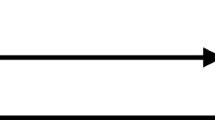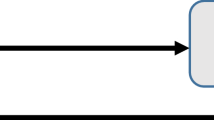Abstract
In recent years, studies on chaotic fuzzy systems inspired by the human brain have been increased to construct a robust and flexible intelligent network. This paper presents an innovative architecture called cascade hyperchaotic fuzzy system (CHCFS) to dominate complications in the type-2 fuzzy systems and increase the chaotic performance of a universal framework, from the accuracy and interpretability point of view. The chaotic features of the proposed model including chaotic search and new information generation, make the structure capable of handling uncertainties. Chaotic search is done in a cascade structure based on two or more one-dimensional chaotic maps. Output of cascade structure provides a new chaotic map that has more high nonlinearity than its grain maps. Fusion of this structure into the membership layer of a conventional fuzzy system makes the CHCFS more capable of confronting nonlinear problems. Analyzing the bifurcation diagram of CHCFS and applying it to the problem of chaotic modeling, the new model is investigated. Simulation results demonstrate that compared with conventional fuzzy systems, and under different chaotic degrees, the proposed CHCFS provides more accurate, interpretable and robust results.












Similar content being viewed by others
Data availability
datasets used and/or analyzed during the current study are available from the corresponding author on reasonable request.
References
Abbasi H, Yaghoobi M, Sharifi A, Teshnehlab M (2022a) NCFS: new chaotic fuzzy system as a general function approximator. J Control Decis. https://doi.org/10.1080/23307706.2022.2110166
Abbasi H, Yaghoobi M, Teshnehlab M, Sharifi A (2022b) Cascade chaotic neural network (CCNN): a new model. Neural Comput Appl 34:8897–8917. https://doi.org/10.1007/s00521-022-06912-3
Ahmad S, Ullah A, Akgül A (2021) Investigating the complex behaviour of multi-scroll chaotic system with Caputo fractal-fractional operator. Chaos Solitons Fractals 146:110900. https://doi.org/10.1016/j.chaos.2021.110900
Ahmadi Balootak M, Rahmani H, Moeinkhah H, Mohammadzadeh A (2021) Non-singleton fuzzy control for multi-synchronization of chaotic systems. Appl Soft Comput 99:106924
Arroyo D, Rhouma R, Alvarez G, Fernandez V (2008) On the security of a new image encryption scheme based on chaotic map lattices. Chaos 18(3):033112. https://doi.org/10.1063/1.2959102
Bauer M, Martienssen W (1991) Coupled circle maps as a tool to model synchronisation in neural networks. Network 2(4):345–351
Bhardwaj S, Srivastava S, Gupta J (2015) Pattern-similarity-based model for time series prediction. Comput Intell 31(1):106–131
Buckletry J, Hayashi Y (1993) Fuzzy simulation based on fuzzy chaos. In: Second IEEE international conference on fuzzy systems, (pp 1039–1043). San Francisco, CA, USA
Chen H, Lee C (2004) Anti-control of chaos in rigid body motion. Chaos Solitons Fractals 21(4):957–965
Chen G, Yu X (2003) Chaos Control: theory and applications. Springer-Verlag, Berlin Heidelberg
Chen S, Hwang T, Lin W (2010) Randomness enhancement using digitalized modified logistic map. IEEE Trans Circ Syst II Express Briefs 57(12):996–1000
Eyoh I, John R, Maere G (2017) Time series forecasting with interval type-2 intuitionistic fuzzy logic systems. In: 2017 IEEE International Conference on Fuzzy Systems (FUZZ-IEEE) Naples, Italy
Fröhlinghaus T, Weichert A, Ruján P (1994) Hierarchical neural networks for time-series analysis and control. Network 5(1):101–116
Gao T, Chen Z (2008) A new image encryption algorithm based on hyper-chaos. Phys Lett A 372(4):394–400
George S, Santra AK (2020) An improved long short-term memory networks with Takagi-Sugeno fuzzy for traffic speed prediction considering abnormal traffic situation. Comput Intell 36(3):964–993
Greenfield S, John R (2007) Optimised generalised type-2 join and meet operations. IEEE International fuzzy systems Conference, London, UK, 2007, pp 1–6. https://doi.org/10.1109/FUZZY.2007.4295355
Ho D, Garibaldi J (2014) Context-dependent fuzzy systems with application to time-series prediction. IEEE Trans Fuzzy Sys 22(4):778–790
Hong L, Sun J (2013) Double crises in fuzzy chaotic systems. Int J Dyn Control 1:32–40
Jakimosk G, Subbalakshmi K (2007) Discrete lyapunov exponent and differential cryptanalysis. IEEE Trans Circ Syst II Express Briefs 54(6):449–501
Jang J (1993) ANFIS: adaptive-network-basedfuzzyinferencesystem. IEEE Trans Syst Man Cybern 23:665–685
Jordan HO, Navarro DM, Stringer SM (2020) The formation and use of hierarchical cognitive maps in the brain: a neural network mode. Network 31(1–4):37–141
Kelso J, Dumas G, Tognoli E (2013) Outline of a general theory of behavior and brain coordination. Neural Netw 37:120–131
Kloeden P (1991) Chaotic iterations of fuzzy sets. Fuzzy Sets Syst 42:37–42
Kříž R (2014) Finding chaos in finnish GDP. Int J Autom Comput 11(3):231–240
Lee R (2004) A transient- chaotic auto associative, network (TCAN) based on lee oscillators. IEEE Trans Neural Netw 15:1228–1243
Lee R (2006) Lee-Associator- a chaotic auto associative network for progressive memory recalling. Neural Netw 19:644–666
Li Z, Zhang X (2007) On fuzzy logic and chaos theory: from an engineering perspective. Studies in fuzziness and soft computing. Springer, Berlin, pp 79–90
Lucas L, Centeno T, Delgado M (2007) General type-2 fuzzy inference systems: analysis, design and computational aspects. In: Proceedings of the IEEE International Conference on Fuzzy Systems, (pp 1–6). London
Lukoseviciute K, Ragulskis M (2010) Evolutionary algorithms for the selection of time lags for time series forecasting by fuzzy inference systems. Neurocomputing 73:2077–2088
Mackey M, Glass L (1977) Oscillation and chaos in physiological control systems. Science 197:287–289
Maximilian R (2012) Getting a handle on how the brain generates complexity. Network Comput Neural Syst 23(3):123–127
Mendel J (2001) Uncertain Rule-Based fuzzy Logic Systems. Prentice-Hall, Los Angles
Molaeezadeh S, Moradi M (2013) Bifurcating fuzzy sets: theory and application. Neurocomputing 118:268–278
Ott E (2002) Chaos in Dynamical Systems. Cambridge University Press, New York
Reiser R, Bedregal B, Reis G (2014) Interval-valued fuzzy coimplications and related dual interval-valued conjugate functions. J Comput Syst Sci 80(2):410–425
Ren L, Zhao L, Zhao Hongs S, Wang H, Zhang L (2018) Remaining useful life prediction for lithium-ion battery: a deep learning approach. IEEE Access 6:50587–50598
Sabaghian A, Balochian S, Yaghoobi M (2020) Synchronisation of 6D hyper-chaotic system with unknown parameters in the presence of disturbance and parametric uncertainty with unknown bounds. Connect Sci. https://doi.org/10.1080/09540091.2020.1723491.
Shen C, Yu S, Lü J, Chen G (2014) A systematic methodology for constructing hyperchaotic systems with multiple positive lyapunov exponents and circuit implementation. IEEE Trans CIrc Syst I 61(3):854–864
Starczewski J (2009) Efficient triangular type-2 fuzzy logic systems. Int J Approx Reason 50:799–811
Tang M, Wang K, Zhang J, Zheng L (2009) Fuzzy chaotic neural networks. In: Handbook of research on artificial immune systems and natural computing: applying complex adaptive technologies. Harbin Engineering University, Harshey, pp 520–555. https://doi.org/10.4018/978-1-60566-310-4
Tao Q, Sun Z, Kong K (2012) Developing learning algorithms via optimized discretization of continuous dynamical systems. IEEE Trans Sys Man Cybern Part B 42(1):140–149
Wang L, Mendel J (1992) Generating fuzzy rules by learning from examples. IEEE Trans Syst Man Cybern 22:1414–1427
Wang G, Qiao J, Bi J, Jia Q (2020) An adaptive deep belief network with sparse restricted boltzmann machines. IEEE Trans Neural Netw Learn Syst 31(10):4217–4228
Wang G, Zhou T, Cho K-S (2022) A deep-ensemble-level-based interpretable Takagi–Sugeno–Kang fuzzy classifier for Imbalanced Data. IEEE Trans Cybern 52(5):3805–3818
Wong M, Liu J, Shum D, Lee R (2009) The modeling of fuzzy systems based on le-oscilatory chaotic fuzzy model (LOCFM). PHYSCON 2009. Catania, Italy
Wong K, Lin Q, Chen J (2010) Simultaneous arithmetic coding and encryption using chaotic maps. IEEE Trans Circ Syst II Express Briefs 57(2):146–150
Yakut E, Süzülmüş S (2020) Modelling monthly mean air temperature using artificial neural network, adaptive neuro-fuzzy inference system and support vector regression methods: a case of study for Turkey. Netw Comput Neural Syst 31(1–4):1–36
Zardecki A (1996) Effect of noise on chaotic fuzzy mappings. In: Proceedings of IEEE 5th International Fuzzy Systems New Orleans, LA, USA
Zhao J, Li Y, Yu X (2014) Levenberg-Marquardt algorithm for mackey-glass chaotic time series prediction. Discret Dyn Nat Soc 2014:1–6
Zhou Y, Bao L, Chen C (2014) A new 1D chaotic system for image encryption. Sig Process 97:172–182
Zhou Y, Hua Z, Pun C, Chen C (2015) Cascade Chaotic system with applications. IEEE Trans Cybern 45(9):2001–2012
Zhou E, Chi-Man V, Nojima Y, Wang S (2022) A ful ly interpretable first order TSK fuzzy system and its training with negative entropic and rule s tability based regularization. IEEE Trans Fuzzy Syst. https://doi.org/10.1109/TFUZZ.2022.3223700
Author information
Authors and Affiliations
Corresponding author
Ethics declarations
Conflict of interest
The authors declare no conflict of interest.
Additional information
Publisher’s Note
Springer Nature remains neutral with regard to jurisdictional claims in published maps and institutional affiliations.
Rights and permissions
Springer Nature or its licensor (e.g. a society or other partner) holds exclusive rights to this article under a publishing agreement with the author(s) or other rightsholder(s); author self-archiving of the accepted manuscript version of this article is solely governed by the terms of such publishing agreement and applicable law.
About this article
Cite this article
Abbasi, H. Cascade hyperchaotic fuzzy system (CHCFS): discussions on accuracy and interpretability. Evolving Systems 15, 153–170 (2024). https://doi.org/10.1007/s12530-023-09546-5
Received:
Accepted:
Published:
Issue Date:
DOI: https://doi.org/10.1007/s12530-023-09546-5




